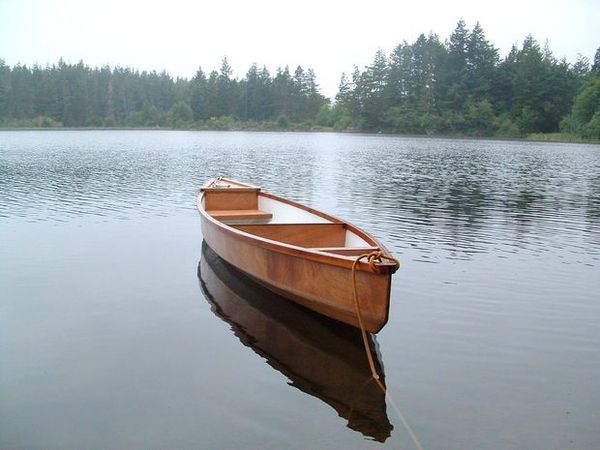Tuesday, November 12, 2024
How to Construct a Wooden Canoe for River Adventures

Building Your Own River Runner: A Guide to Constructing a Wooden Canoe
Hey there, fellow river enthusiast! Ever dreamt of gliding down a winding river in a boat you built yourself? The satisfaction of crafting a wooden canoe, a vessel of smooth, flowing lines, is a feeling unlike any other. It's more than just building a boat; it's creating an extension of yourself, a companion for your watery adventures. And while it might seem daunting, trust me, it's achievable with a little patience, passion, and a good dose of woodworking knowledge. Let's dive into the exciting world of wooden canoe construction!
The Allure of a Wooden Canoe
What makes a wooden canoe so special? For starters, it's a work of art. The natural beauty of wood, its grain patterns and warm hues, brings a unique charm to any boat. But it's more than just aesthetics; it's the feel of the wood beneath your hands, the way it responds to your strokes, the gentle creak and groan of the hull as it cuts through the water. There's a connection you forge with a wooden canoe that's hard to find with modern, mass-produced boats.
Planning Your Build: Getting Started Right
Before you dive headfirst into the sawdust, it's crucial to have a solid plan. The journey starts with selecting the right design. Do you envision a graceful, sleek canoe for flatwater paddling or a sturdy, wide-bottomed one for tackling rapids?
Choosing a Design
There are countless canoe designs available, from classic cedar strip canoes to modern stitch-and-glue designs. Browse online plans or visit reputable canoe builders for inspiration. Consider your paddling style, the types of waters you'll be navigating, and your level of woodworking experience. Remember, a design that matches your needs will make the build process more enjoyable and your canoe more effective on the water.
Gathering Your Materials
Once you've chosen your design, it's time to gather materials.
- Wood: The heart of your canoe will be its wood. Popular choices include cedar, spruce, and mahogany for their strength, workability, and natural beauty.
- Epoxy resin and hardener: This is the glue that binds your canoe together, ensuring watertight seals and structural integrity.
- Fiberglass cloth: Used to reinforce the hull and add strength and durability.
- Tools: You'll need a range of tools for shaping, cutting, and assembling your canoe.
Remember to factor in the cost of materials and tools when budgeting for your project. Don't be afraid to shop around for the best deals, but prioritize quality materials for a strong and long-lasting canoe.
Stepping into the Workshop: The Construction Journey
Now the fun begins! Let's break down the construction process, step-by-step.
1. Building the Frames
The frames provide the skeletal structure of your canoe. Using your plans, carefully cut and shape the wood, ensuring they are precisely joined and secured. This stage requires precision and attention to detail.
2. Planking the Hull
Next, you'll attach the planking to the frames, creating the canoe's hull. For strip canoes, you'll use thin strips of wood that are carefully bent and glued to the frames. For stitch-and-glue canoes, you'll join pre-cut panels using temporary stitches and epoxy.
3. Shaping the Hull
Once the planking is in place, you'll begin shaping the hull using various tools like rasps, sanders, and planing tools. The goal is to achieve a smooth, flowing shape that will glide through the water efficiently.4. Glassing and Finishing
This step involves applying layers of fiberglass cloth and epoxy resin to the hull to provide strength, watertightness, and a smooth, durable finish. Carefully follow the instructions for mixing and applying the resin for optimal results.
5. Adding the Details
Now comes the fun part! Add the final touches, including gunwales, thwarts, seats, and a yoke or carrying handles. These details are not just for aesthetics, they contribute to the canoe's overall functionality and usability.
Putting It All Together: Final Touches
Once the construction is complete, you'll need to give your canoe a final sanding and finishing.
1. Finishing the Wood
Apply a varnish, paint, or oil to protect the wood from the elements and enhance its beauty.
2. Adding a Finishing Touch
Personalize your canoe with your initials, a special emblem, or a design that reflects your personality. It's a way to make your boat truly unique and memorable.
Launching into Adventure
The day finally arrives: your custom-built wooden canoe is ready for its maiden voyage. The feeling of launching your creation onto the water is truly rewarding. The canoe will have its own unique character, a reflection of your efforts and the love you poured into its construction. Now, grab your paddle, and let the river guide you to new adventures!
Remember, Building a Canoe is a Journey
It's not just about the end product, it's about the process, the challenges, and the triumphs along the way. You'll learn new skills, hone your patience, and discover a newfound respect for the craft of woodworking. Building a wooden canoe is an experience that will stay with you long after the final coat of varnish dries. So, if you have the passion, the time, and the dedication, go ahead, embrace the journey, and build your own piece of the river.
No comments:
Post a Comment
Note: Only a member of this blog may post a comment.